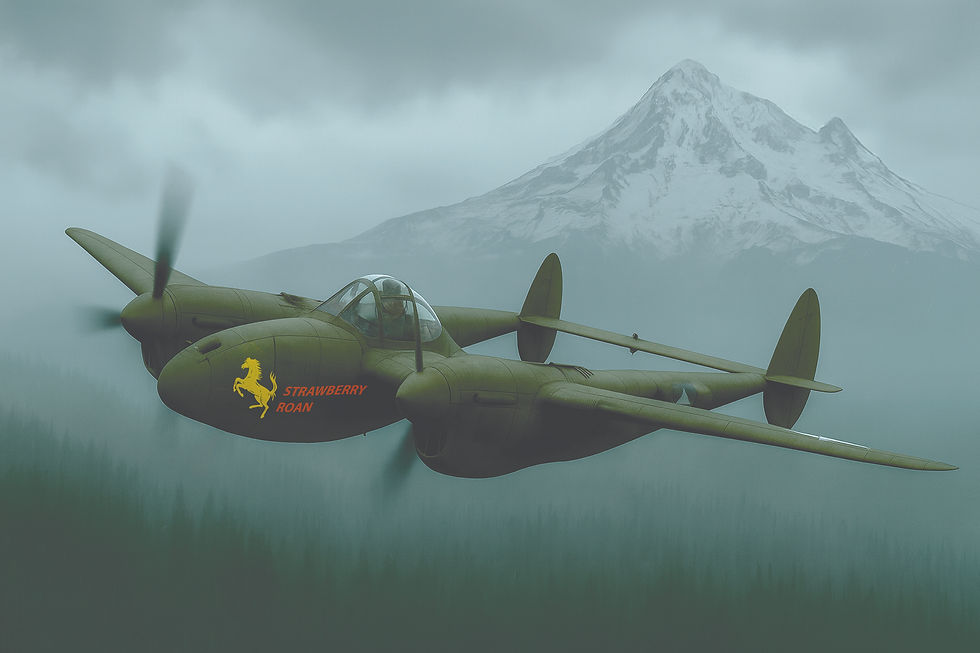The Viewfinder: A P-38 Crash in the Bull Run Watershed
- Gary Randall
- Aug 29
- 2 min read

Less than five miles north of Brightwood - deep in the protected Bull Run watershed - lies the place where a young World War II pilot lost his life. For nearly two decades, the forest kept the secret of what happened to 2nd Lt. Alan Clay Strader, whose aircraft vanished on a rainy morning in 1943.
On March 26, 1943, 2nd Lt. Alan Clay Strader took off from Portland Army Air Base in a Lockheed P-38 Lightning, a sleek single seat, twin-engine, twin-tailed fighter. Just 20 years old, Strader was on a training mission. He never returned. For decades, the fate of the pilot and his aircraft remained a mystery.
Strader had only recently earned his wings, completing flight training in Arizona before assignment to McChord Field in Washington. He was temporarily stationed in Portland to train on the P-38. His plane, bearing the name Strawberry Roan and the image of a prancing yellow horse, disappeared in bad weather that Friday morning.
The Bull Run watershed, densely forested and closed to public access, became the silent keeper of the crash. No distress call was ever received. In all likelihood, Strader flew into terrain obscured by clouds - an accident now known as “controlled flight into terrain,” or CFIT. Search crews scoured the area, but no trace was found.
Back home in Montana, the Strader family waited. His mother Gladys, living in Colorado Springs at the time, never gave up hope. His two younger brothers - Louis and Robert - followed his path into military aviation. Louis trained as a pilot in Mississippi; Robert entered the Air Corps Cadet Program in Montana, inspired by his older brother’s service.
It would be nearly 20 years before the mystery was solved.
In July 1962, a U.S. Forest Service timber cruiser came across the weathered remains of a plane deep in the Bull Run watershed. Investigators were called in. It was a P-38. The serial numbers matched those of Lt. Alan C. Strader’s missing aircraft. The faint image of a prancing yellow horse and the name Strawberry Roan was still visible on the nose, proof of identity even before it was officially confirmed.
Strader’s remains were returned to his family. He was buried beside his father in Highlands Cemetery in Glasgow, Montana. A quiet funeral was held. For the Straders, it was the closure they had waited for since 1943.
Here in Mount Hood country, where forests grow over old scars and history hides just out of sight, Lieutenant Strader’s story is part of our landscape now. The wreckage remains protected and untouched in the watershed, a silent monument to a young pilot who disappeared above our familiar ridgelines.
Though few ever saw Strawberry Roan in flight, and fewer still know the exact location of the crash, the story belongs to all of us who live in the shadow of Mount Hood. It’s a reminder that even in our quiet corner of Oregon, history echoes through our forests.







Comments